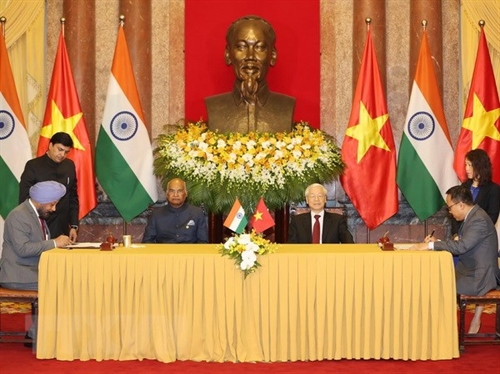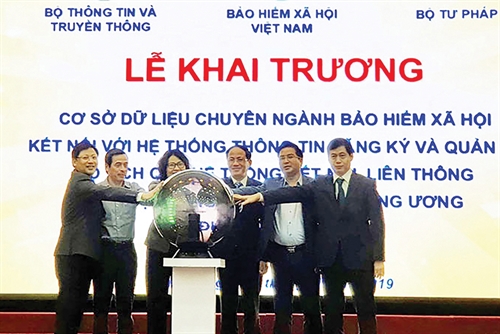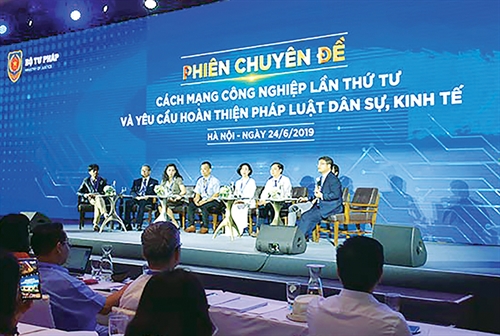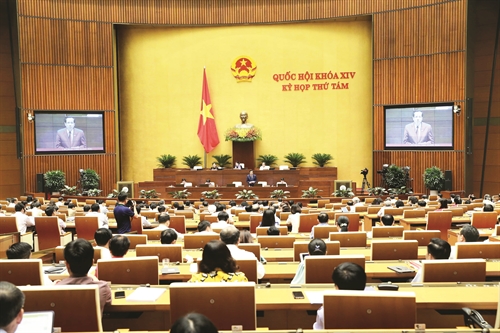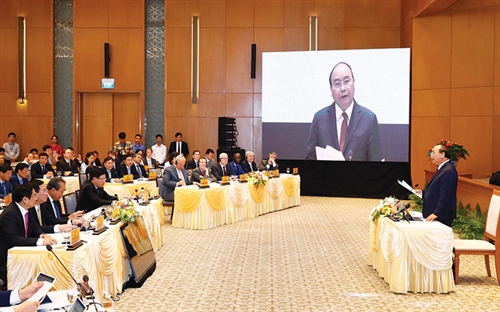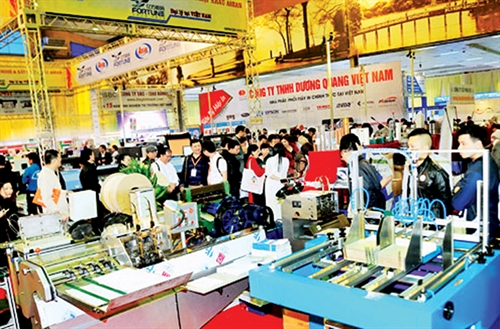The 2010 Law on Environmental Protection Tax and guiding documents have provided an important economic instrument in protecting the environment in Vietnam. However, being the first of its kind, this Law still reveals some limitations affecting its effectiveness. This article highlights the loopholes related to the tax bases and proposes solutions for improvement.
Nguyen Thi Hue, LL.M[1]
Overview of the environmental protection tax legislation and tax bases
Vietnam’s legislation on environmental protection tax was formed on the basis of the 2010 Law on Environmental Protection Tax (the Law)[2] and various guiding documents.[3] Their enactment was imperative as Vietnam’s environment had been continuously deteriorating, posing “serious challenges to the country’s sustainable economic development”[4] and requiring new, effective and comprehensive environmental protection solutions. After seven years’ implementation, the regulations on environmental protection tax have achieved positive results.
Among the regulations on environmental protection tax, those on tax bases are of special importance as they provide grounds for calculating payable tax amounts. Chapter II of the Law prescribes the tax bases (Article 6), tax calculation methods (Article 7), and tax brackets (Article 8). These regulations are concretized in various documents including Government Decree 67 of 2011, MoF Circular 152 of 2011, and Resolution 1269 of 2011, Resolution 888a of 2015, and Resolution 579 of 2018, of the National Assembly Standing Committee.
Article 6 of the Law provides two tax bases, namely quantity of goods used for tax calculation and absolute tax rate.
Article 7 states that the payable tax amount is determined by multiplying the quantity of taxable goods units by the absolute tax rate per unit of goods. For home-made goods, the quantity of taxable goods is the quantity of goods produced, sold, exchanged, internally consumed or donated. For imported goods, it is the quantity of imported goods; or for fixed fuels containing petrol, oil or fossil grease, the quantity of taxable goods is the quantity of petrol, oil or grease contained in the quantity of the mixed fuels imported, or produced, sold, exchanged, donated or internally consumed which is converted into a unit of measurement for tax calculation for relevant goods.[5]
Article 8 provides a tax rate bracket for each type of taxable goods without setting specific absolute tax rates. As per Clause 2 of this Article, the National Assembly Standing Committee shall set specific tax rates for each type of taxable goods, ensuring that the tax rates conform to the State’s socio-economic development policy in each period and correspond to the goods’ possible adverse environmental impacts.
The Law’s provisions on absolute tax rates adhere to the polluter-pay principle and ensure fairness in the payment of environmental protection tax. They also facilitate the stabilization of state budget revenues collected from environmental protection tax, even in case the prices of taxable goods fluctuate. At the same time, tax rate brackets help ensure flexibility in setting specific tax rates.
However, the regulations on tax bases still reveal loopholes, causing difficulties and problems in their practical implementation.
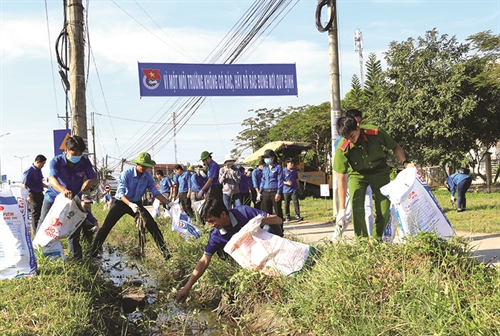 |
| Members of Vinh Long province’s Communist Youth Union collect plastic rubbish__Photot: Le Thuy Hang/VNA |
Loopholes in regulations on environmental protection tax bases
Firstly, the Law does not stipulate tax calculation methods for some mixed commodities and products such as petrol containing up to 5 percent of ethanol in volume (E5), petrol containing up to 10 percent of ethanol in volume (E10) and hydrochlorofluorocarbons (HCFCs).[6] So, the MoF had to issue guidelines on specific methods of calculating the tax on mixed commodities and goods, such as those provided in Circular 152 of 2011. However, for HCFCs, tax calculation methods are mentioned only in some official letters of the Ministry. According to Article 4 of the 2015 Law on Laws, official letters are not legal documents. This makes it hard for related entities to identify legal bases for calculating environmental protection tax on HCFCs. It also causes losses to state budget revenues for the period from the beginning of 2012 to September 1, 2015.[7] Therefore, to ensure the uniform application of law and avoid cases in which mixed products are liable to environmental protection tax while there are no instructions, the Law should be added with provisions on environmental protection tax calculation methods for mixed products.
Secondly, the regulations on the time for calculating environmental protection tax on petrol and oil are inconsistent.
The provisions of Article 9.4 of the Law say that for petrol and oil produced or imported for sale, the time for tax calculation is the time the principal trader sells petrol and oil. These provisions are not consistent with the principle of unified management of the collection of environmental protection tax[8] provided in the 2015 Law on the State Budget. Specifically, Article 35.1.d of this Law says that environmental protection tax collected from imported goods constitutes a revenue wholly belonging to the central budget. However, as the time for calculating environmental protection tax is not the time of registration of customs declarations like for other imports, local tax offices have to separate tax revenues from imported petrol and oil for transfer to the central budget from those from home-made petrol and oil sold by traders for the purpose of determining tax revenues between the central budget and local budgets. This also causes difficulties to businesses as they have to make separate statistics of imported petrol and oil volume and home-made petrol and oil volume sold.[9]
Thirdly, the current tax rate brackets prove to be inappropriate in terms of environmental impacts of taxable commodities.
The regulations on determination of environmental protection tax rates for each type of taxable goods should be flexible and suit the country’s socio-economic development conditions. They must also adhere to certain principles, the most fundamental of which is that environmental protection tax rates must be based on the goods’ adverse environmental impacts.
Under current regulations, the environmental protection tax rate for petrol and oil is VND 4,000 per liter and VND 15,000 per ton of coal (except anthracite coal). These rates are irrational given the fact that state budget revenues from environmental protection tax mainly come from petrol and oil products (around 95 percent[10]) while petrol and oil are not the main sources of pollution in Vietnam.
Fourthly, the Law stipulates that the environmental protection tax is an indirect tax, which complies with prescribed requirements and principles of the environmental protection legislation. However, it fails to explain what an indirect tax is so that consumers understand that as an indirect duty, environmental protection tax will be included in the selling price of taxable commodities and products. This leads to the situation that at present many consumers are still not aware that they are subject to environmental protection tax, thus making it hard to form a green consumption trend. As a result, consumers do not shift to using more environmentally friendly products like E5 petrol and environment-friendly plastic bags.
Fifthly, the unit of calculation and rate of environmental protection tax on plastic bags remain irrational. Plastic bags undoubtedly cause adverse impacts on the environment. Many countries in the world have taken specific, drastic actions to minimize the use of hard-to-decompose plastic bags. Some countries even ban the use of plastic bags.[11] So, subjecting plastic bags to environmental protection tax is appreciated. However, as Vietnam imposes environmental protection tax per kilogram of plastic bags, this “will accidentally lead to the more production of thin plastic bags as the thicker ones are subject to higher tax rates. This method of tax imposition seems to be unreasonable because thin plastic bags cause more adverse impacts on the environment.”[12]
Nevertheless, the imposition of environmental protection tax on the number of plastic bags like in Britain, Ireland and Hong Kong also poses certain problems, compelling tax authorities to convert from kilogram into bag for tax calculation. Another problem is that the size (length, width, thickness, etc.) of bags must also be counted for determining tax rates as suitable to the environmental impacts of each type of bags.
Moreover, Vietnam’s current environmental protection tax rates for plastic bags are lower than those applied elsewhere. For instance, the tax rate for a plastic bag of a capacity of 5 kg and of a size of 34 cm x 50 cm (for household use, with 70-95 bags weighing 1 kg[13]) is merely VND 500-700, while that for a thin plastic bag (white, green or red), with 100-200 bags weighing 1 kg[14], popularly used at marketplaces is VND 250-500. Meanwhile, in other countries, the tax rates are much higher, e.g., VND 1,500/bag in Britain since 2015, which will be doubled from the beginning of 2020. The rate of VND 1,500/bag is also applied in Hong Kong[15], while the rate of VND 5,500/bag is imposed in Ireland[16].
Sixthly, the principles of setting specific environmental protection tax rates for each type of taxable goods remain unspecific and incomplete.
Under Article 8.2 of the Law, based on the prescribed tax rate bracket, the National Assembly Standing Committee will set specific tax rates in conformity with the State’s socio-economic development policy in each period and based on the goods’ adverse environmental impacts. In the author’s view, the priority order of these two principles should be reversed as the primary objective of environmental protection tax is to protect the environment.
Furthermore, the lack of regulations restricting the increase and reduction of specific tax rates for each commodity or product is a loophole allowing the sudden increase of environmental protection tax rates for some commodities, which can cause adverse effects on the people’s livelihood as in the case of tripling the environmental protection tax rate for petrol and oil products (except kerosene) in 2015[17]. It is necessary to fill up this loophole to prevent the sudden rise in environmental protection tax rates in the future because under current regulations, the difference between the minimum and maximum environmental protection tax rates is wide (from 1.5 to 7 times)[18].
Also, there should be a roadmap for adjusting environmental protection tax rates on a periodical basis to ensure that the tax rates correspond to the negative impacts of the use of products. When building this roadmap, it is necessary to devise measures to avoid the speculation and stockpiling of taxable goods as seen in the case of environmental protection tax on insecticides in Norway[19].
Solutions for improvement
Based on the above analyses, below are some solutions for improving regulations on environmental protection tax bases.
The first is to add to the Law provisions on environmental protection tax calculation methods for taxable mixed products in order to ensure the uniform application of the environmental protection tax legislation and prevent the increase of mixed commodities and products liable to the tax. Specifically, Article 6.2 of the Law should be added with the provision on the quantity of taxable mixed goods as follows: “For mixed goods, the quantity of taxable goods is the quantity of goods contained in the quantity of mixtures imported or produced, sold, exchanged, donated or put into internal consumption which is converted into their units of calculation in the tax bracket prescribed in Clause 1, Article 8 of this Law.”
However, this solution may place a burden on or even cause financial losses to the entities that import petrol and oil for sale as they would have to pay in advance a too large tax amount.
Secondly, to ensure convenient collection of environmental protection tax and consistency between the Law and the 2015 Law on the State Budget, it is necessary to change the time of environmental protection tax calculation for petrol and oil imported for sale to the time of registration of customs declarations like other imported goods. So, Article 9.4 of the Law should be amended as follows: “For petrol and oil produced for sale, the time of tax calculation is the time when a principal trader sells petrol and oil.”
The 2015 Law on the State Budget’s provision on the distribution of revenues from imported petrol and oil between the central budget and local budgets should be also amended in the direction that environmental protection tax revenues from imported goods should be divided between the central budget and local budgets in proportion. So, lawmakers should annul Article 35.1.d of this Law and remove the phrase “except environmental protection tax prescribed at Point d, Clause 1 of this Article” at Point dd, Clause 2, Article 35.
The third solution is to review and adjust environmental protection tax rate brackets for each type of taxable goods on the basis of the goods’ adverse environmental impacts. Ideally, the minimum tax rate must not be lower than the expense for collection of environmental protection tax while the maximum tax rate must be equivalent to possible negative impacts of the goods.
Fourthly, Article 2 of the Law should be added with explanations about “indirect tax”. At the same time, to address the problem related to the units of environmental protection tax calculation, lawmakers should add provisions on the limit of the size (thickness) of plastic bags with a view to preventing the production of super-thin plastic bags, which cause even more negative impacts on the environment.
Finally, Article 8.2 of the Law should be revised as follows: “Based on the tax rate bracket prescribed in Clause 1 of this Article, the National Assembly Standing Committee shall decide on specific tax rates for each type of taxable goods on the principles that the tax rates for taxable goods will be based on the goods’ negative environmental impacts and suit socio-economic development conditions in each period and, when adjusted, must not exceed twice the current tax rates.-
